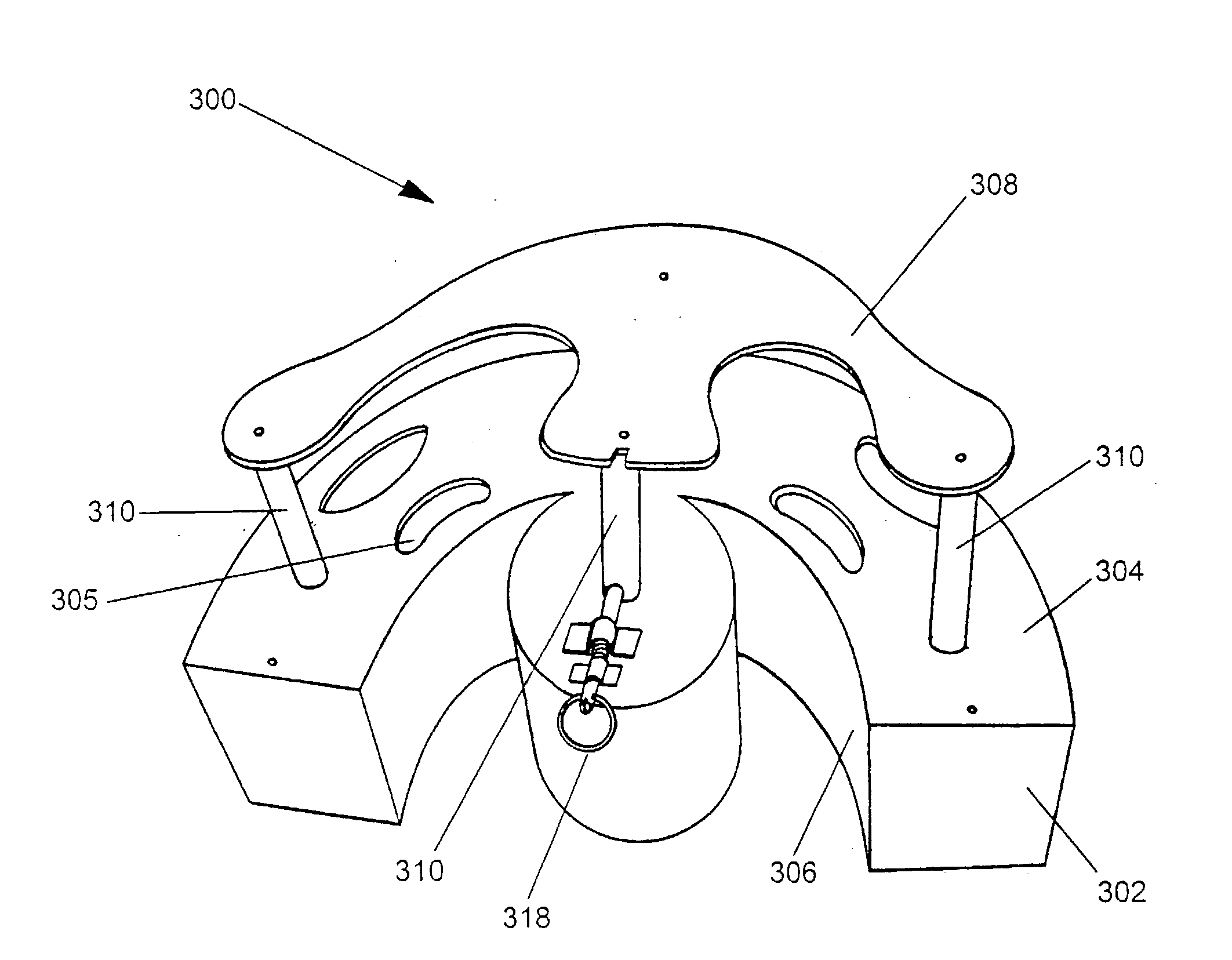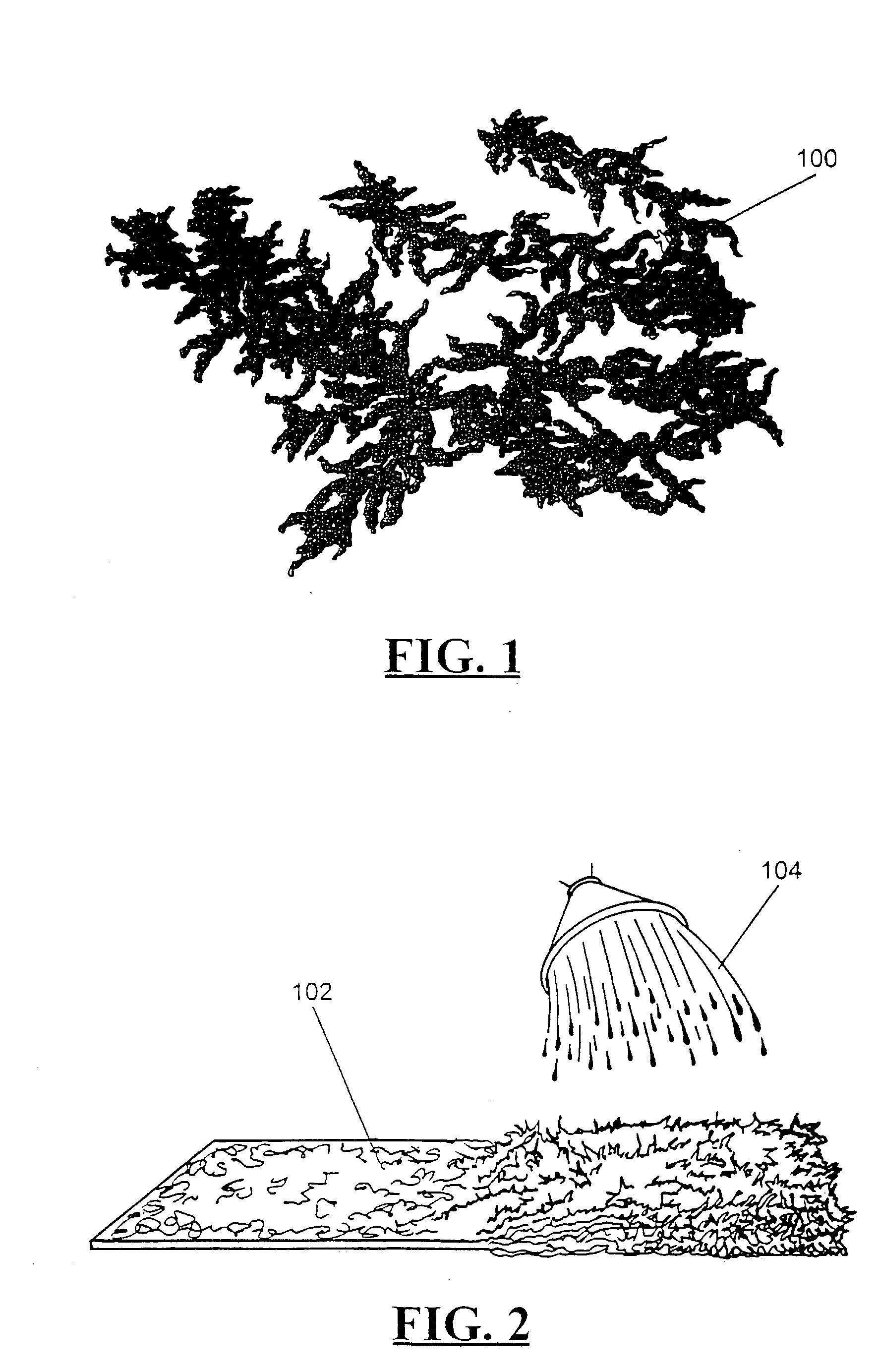Plant container liners
a plant container and container lining technology, applied in the field of plant container liners, can solve the problems of unreconstituted interior of the liner, weaken the structural integrity of the 3-dimensional form of the liner, etc., and achieve the effect of pleasing aesthetics and minimising transportation spa
- Summary
- Abstract
- Description
- Claims
- Application Information
AI Technical Summary
Benefits of technology
Problems solved by technology
Method used
Image
Examples
Embodiment Construction
[0092] FIG. 1 shows filaments of harvested sphagnum moss 100. The sphagnum moss 100 is used primarily in the present invention for its water retentive property which is up to 20 times its own weight in water. The sphagnum moss 100 is also used for its aesthetic value in hanging basket arrangements. The sphagnum moss is harvested from a natural and renewable source.
[0093] Initially, some of the excess water may be removed from the freshly harvested sphagnum moss 100 through the use of a centrifuge or calender rolls. The sphagnum moss 100 is then dried either in a kiln or with natural sunlight. Preferably, the sphagnum moss 100 is dried in a kiln with a continuous conveyor (not shown), the speed of which is controllable. Suitably, an automatic feeding system (not shown) that deposits the moss onto the kiln's continuous conveyor is also provided. The kiln is in the form of a tunnel and operates to circulate heated air which is generated from hot water heat exchangers operating at a tem...
PUM
| Property | Measurement | Unit |
|---|---|---|
| thickness | aaaaa | aaaaa |
| thickness | aaaaa | aaaaa |
| thickness | aaaaa | aaaaa |
Abstract
Description
Claims
Application Information
 Login to View More
Login to View More - R&D
- Intellectual Property
- Life Sciences
- Materials
- Tech Scout
- Unparalleled Data Quality
- Higher Quality Content
- 60% Fewer Hallucinations
Browse by: Latest US Patents, China's latest patents, Technical Efficacy Thesaurus, Application Domain, Technology Topic, Popular Technical Reports.
© 2025 PatSnap. All rights reserved.Legal|Privacy policy|Modern Slavery Act Transparency Statement|Sitemap|About US| Contact US: help@patsnap.com



